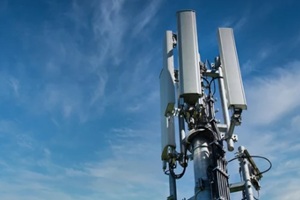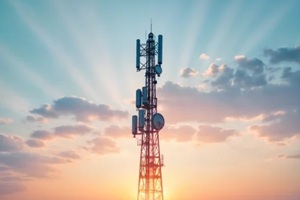 The Internet of Things (IoT) continues to evolve in numerous industry sectors, from healthcare and manufacturing to retail. Business leaders have many important decisions to make concerning IoT deployment, including whether cellular IoT is the right connectivity type for their business. Cellular connectivity is a compelling choice, but it is not the only one, with other options such as Wi-Fi, Bluetooth, and LoRaWAN having their own pros and cons.
The Internet of Things (IoT) continues to evolve in numerous industry sectors, from healthcare and manufacturing to retail. Business leaders have many important decisions to make concerning IoT deployment, including whether cellular IoT is the right connectivity type for their business. Cellular connectivity is a compelling choice, but it is not the only one, with other options such as Wi-Fi, Bluetooth, and LoRaWAN having their own pros and cons.
As technology leaders, IT managers, and business owners deploy IoT networks in their businesses, they should know the features, benefits, and limitations of different connectivity types, including cellular networks.
This article aims to help these leaders evaluate whether cellular IoT is the best fit for their connected IoT ecosystem.
Understanding Cellular IoT Connectivity
Cellular IoT works similarly to cellphone infrastructure, which connects devices to the internet, the cloud, and each other using the network. For IoT, cellular network technology can be leveraged in different ways to achieve the balance of energy usage, performance, and cost that most businesses are looking for with new IoT systems.
Different Types of Cellular Networks
Cellular technology encompasses a range of device types, including:
- LTE-M
- NB-IoT
- LTE Cat-1
- 5G
Each network type has its ideal uses. LTE-M, for example, supports medium-bandwidth applications and is often used in healthcare settings. 5G networks tend to have the lowest latency and fastest performance, making them ideal for tasks that prioritize constant uptime, such as remote surgeries.
Regardless of whether the business aims to deploy environmental sensors, wearable healthcare technology, asset trackers, or anything in between, an experienced provider can help match the network type to the business’s needs by being aware of both the benefits and the trade-offs.
Key Features and Capabilities
Cellular IoT brings a robust set of capabilities to IoT deployment, including:
- Global network coverage, even in remote industrial sites
- Mobility support for asset transports or cross-region networks
- Secure data transmissions over encrypted networks
- Over-the-air (OTA) provisioning to update devices remotely
- SIM-based authentication and access controls
Businesses seeking consistent remote connections or broad geographical coverage may benefit the most from cellular IoT, but many different businesses can use it to their advantage.
Advantages of Cellular IoT Solutions
Across industry sectors and network deployment types, cellular IoT networks can provide businesses with these primary advantages:
 Coverage and Reliability: Cellular networks offer both nationwide and international network coverage, which, unlike other network types, allows devices to remain connected in dispersed locations. This is ideal for mobile use cases like remote device monitoring or fleet management.
Coverage and Reliability: Cellular networks offer both nationwide and international network coverage, which, unlike other network types, allows devices to remain connected in dispersed locations. This is ideal for mobile use cases like remote device monitoring or fleet management.- Scalability Options: Cellular networks can support far more devices, even tens of thousands, than other network types while maintaining remote diagnostic and device monitoring tools.
- Security Features: Cellular networks have a strong baseline for connection security, including SIM-based authentication, encryption, and firewalling.
Common Challenges and Limitations
Despite these benefits, cellular IoT networks also come with challenges that should be assessed before committing to cellular connections at scale.
- Cost Considerations: Cellular networks have both immediate and ongoing costs, including monthly data plans.
- Power Consumption: Different cellular networks differ in power consumption, but cellular networks in general consume more power than Bluetooth, especially for devices with always-on connections.
- Network Dependencies: Cellular networks rely on a third-party carrier’s infrastructure, unlike other network types, which can be internally installed and controlled.
Comparing Cellular with Alternative IoT Connectivity
Businesses should consult with prospective IoT network providers about the advantages of different connectivity types, but this chart can provide a broad overview of how different network systems compare:
| Network Type | Power Efficiency | Data Rate | Range | Mobility |
| Cellular | Medium | Medium | High (global) | High |
| Bluetooth | High | Low | Lowest |
Limited |
| Wi-Fi | Low | High | Low | Limited |
| LoRaWAN | High | Low | High (rural) | Low |
Evaluating Your IoT Connectivity Needs
Before deploying a cellular IoT network, operations managers and other technology decision-makers should consider their business’s specific network requirements:
Application Requirements
Managers should inquire about their application requirements before choosing cellular IoT or a specific variant. They should know how much data their devices will need to handle, whether the devices will move location, whether they will require remote diagnostic systems, and whether real-time, low-latency performance is important to their function.
Deployment Environment
The environment in which the IoT devices will be deployed also changes the business’s connectivity needs. For example, not all network types can offer indoor penetration. Urban, rural, and remote settings have different connection needs, as do geographically dispersed business locations that must remain connected, such as multiple connected warehouses.
Budget Constraints
Cellular IoT deployment has both initial and recurring costs, including the hardware deployment (modules, modems, and antennas) and SIM provisioning. Businesses must then purchase a data plan that makes sense for their workflow and plan for continuous maintenance and updates, which can come with infrastructure costs. All these costs should be considered before choosing cellular connectivity, not just the initial hardware fees.
Get Started with Cellular IoT Today
 Cellular IoT is a viable option for business managers looking to deploy IoT device networks at scale. However, it is not the only option. Global range and mobility support are highest with cellular networks, but their cost and carrier dependency may be a drawback for some.
Cellular IoT is a viable option for business managers looking to deploy IoT device networks at scale. However, it is not the only option. Global range and mobility support are highest with cellular networks, but their cost and carrier dependency may be a drawback for some.
At Allpoint Wireless, our experienced team helps business leaders deploy IoT networks at scale, customized for the needs of their location, workflows, and budgets. As America’s #1 Low-Cost Wireless Provider, we are backed by prompt support and Allpoint Command, our powerful self-service portal. Contact our team today to learn how cellular IoT could be the right choice for your network.